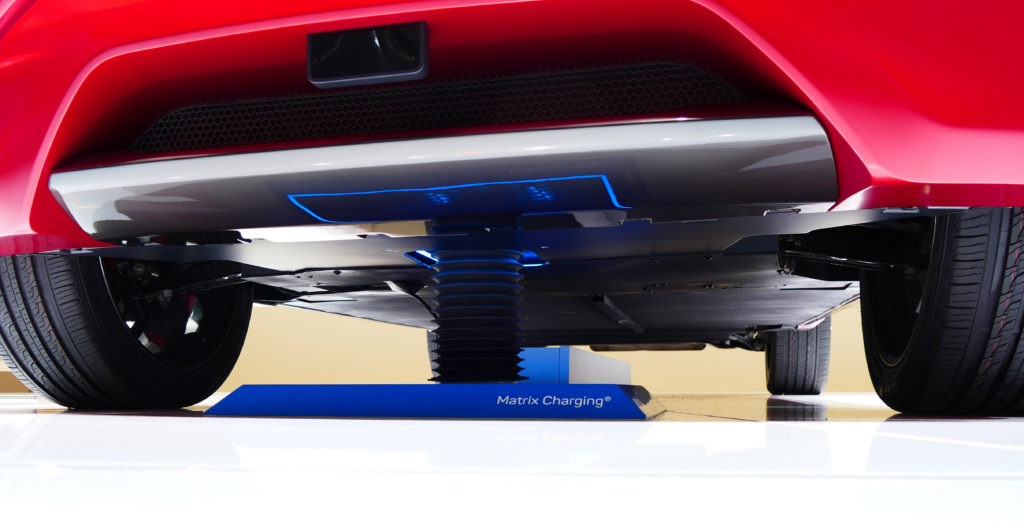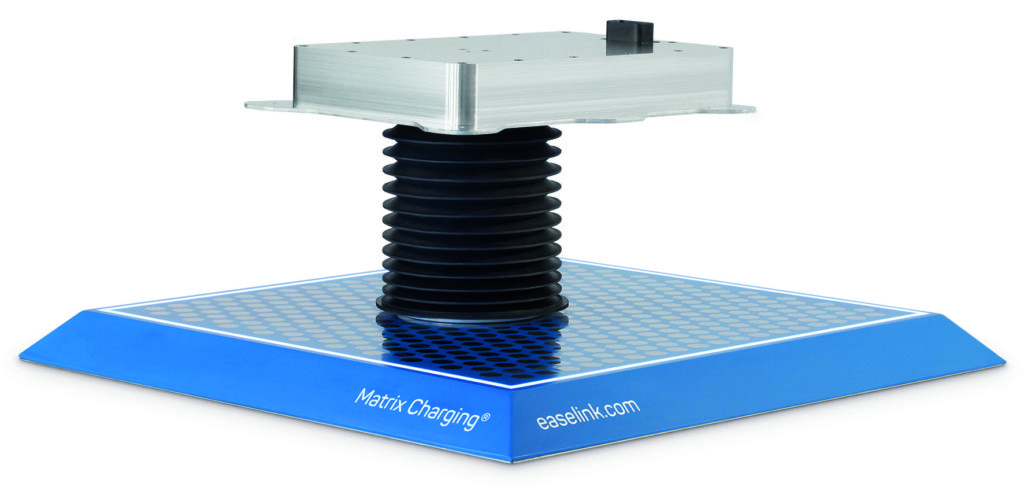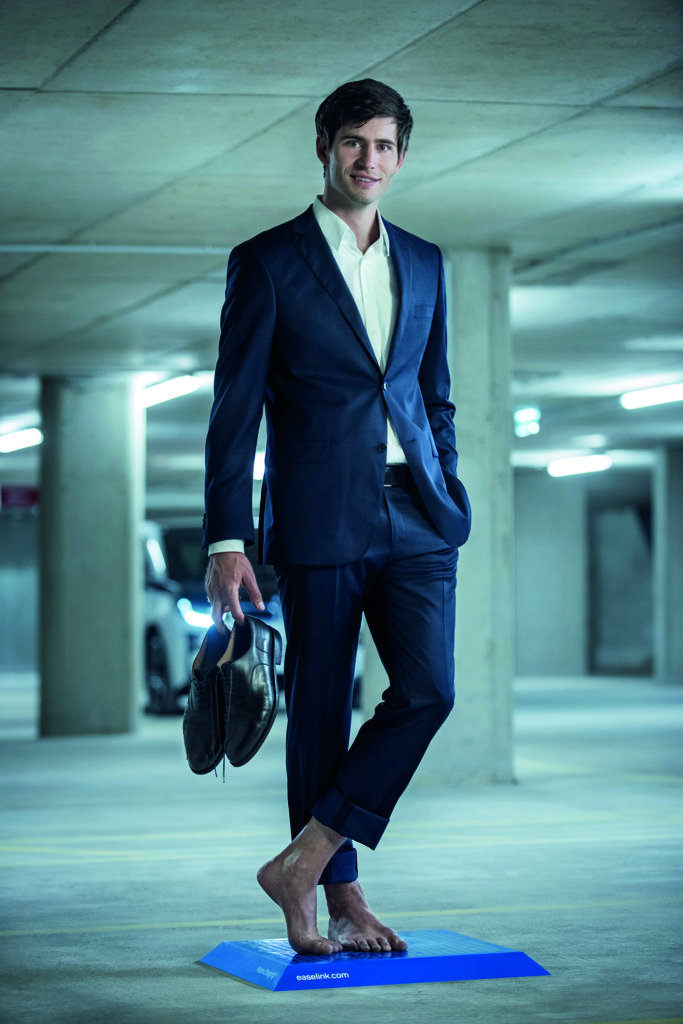Austrian start-up Easelink has developed a technology with which electric vehicles can be automatically charged via pads fastened to the ground – anywhere from underground garages to drive-ins.
Anytime electric vehicles are standing still, they could also potentially be charging. Current standard solutions for charging electric vehicles do not support this.
Quite the contrary. Cumbersome cable connections are a stumbling block to the penetration of electromobility – grappling with non-standardised plugs, dirty cable bundles and expensive charging columns make the charging of electric cars frustrating and inconvenient.
Easelink has therefore re-envisioned the charging of electric vehicles. Cables and charging columns will become obsolete.

The charging process will be automated and take place without the user even noticing – time spent parked will effectively become time spent charging.
The technology at the core of this e-revolution is called Matrix Charging. A connector lowers from the undercarriage of the electric vehicle docks automatically with a pad fastened to the ground, which is connected to the power grid.

The exact parking point and the orientation of the vehicle does not matter. The connector locks itself automatically to the six-sided metallic contact surfaces of the pad.
“With Matrix Charging, electric vehicles are charged automatically and without cables – this smart technology operates itself without user intervention,” explains Easelink founder Hermann Stockinger. This will also increase the perceived range of electric vehicles, emphasises Stockinger: “From parking garages or drive-ins to private parking spaces or railway crossings – any time spent standing still can be used for charging the electric vehicle.”

Based on conduction, the system achieves a transmission performance of up to 43 kW (DC) or 22 kW (AC), with an efficiency exceeding 99%.
Induction solutions based on electromagnetic waves do not achieve even a quarter of this performance – and they offer practically no parking tolerance.
“Matrix Charging therefore satisfies all the prerequisites to become the international standard for charging electric vehicles,” says Stockinger.
Car makers around the world are studying the high potential of the technology.
Prototypes of the system are currently being validated in a wide range of development environments on multiple continents.
Specifically, the Asian car maker Great Wall Motors has demonstrated its interest in Matrix Charging. At the largest automotive trade fair in the world, the last IAA in Frankfurt, the Asian group presented the system in a concept vehicle of the premium brand WEY.
The presentation of the technology at the Guangzhou Automobile Exhibition in Asia also awoke extensive interest within the automotive industry.
“We are currently involved in numerous intensive negotiations with car makers around the world, and we are pursuing the clear goal of making Matrix Charging the global standard over the medium term,” says Easelink founder Stockinger.
As a system, the pads and connectors are many times less expensive than existing and upcoming charging solutions, making them suitable for mass introduction.
Matrix Charging can be integrated into any series production model and makes automated charging, which has so far been reserved for the premium class, possible in all automobile segments,” explains Stockinger.
While the Easelink technology could become an additional boost to electric car makers, infrastructure operators can also profit from Matrix Charging.
The technology is the only conductive and fully automatic charging technology in the world, and no moving parts are required on the infrastructure side. This makes the system robust and enables maximum scalability.
 Engineer News Network The ultimate online news and information resource for today’s engineer
Engineer News Network The ultimate online news and information resource for today’s engineer





